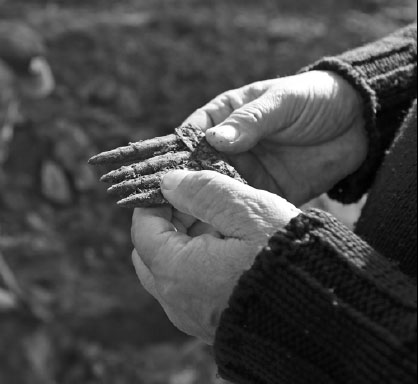WWI shells a part of life in Belgium
Hundreds killed and injured near Ypres trenches since war's end in 1918
A farmer in western Belgium is accustomed to digging up an unusual crop along with potatoes and beets.
"It's a fairly poor harvest," said Stijn Butaye, 26, as he looked at a haul of 28 World War I shells unearthed in the last two weeks and awaiting collection by Belgium's bomb disposal squad.
The 40-hectare Butaye family farm sits where, 100 years ago, advancing German forces pounded British lines and eventually established a base with a hospital and an aid station in two large fortified bunkers.
Belgian farmers who returned to the muddied fields after the war mostly just filled in the trenches and got back to work.
Butaye's grandfather sought in the 1960s to blow up the German bunkers he despised, but Butaye himself has developed such a love for the war memorabilia he has uncovered over the past decade that he set up his own museum.
It is quite a haul: dozens of bottles, shells, two British rifles, a helmet and, at the entrance, the end section of an early British tank with metal treads and a book signed by visitors from as far away as Canada, South Africa and Australia.
"It is a hobby that has got a bit out of hand," Butaye said.
Centenary commemorations this year have spiked international interest particularly in the Ypres area, which saw some of the heaviest fighting and is now dotted with war cemeteries.
Some 65 million soldiers mobilized for the Great War; around 9 million were killed, 20 million injured and nearly 7 million taken prisoner.
Belgium will hold ceremonies on Monday to mark the 100th anniversary of the First Battle of Ypres and the flooding of the Yser plain at Nieuwpoort - events that blocked the German advance and spawned almost four years of trench warfare.
Local farmers have been plowing the fields for generations, but bombs keep turning up, partly because the act of plowing breaks up the soil, and then because, in winter, ice forms around a metal object and nudges it higher in the ground.
Postwar fatalities
Butaye says the harsher the winter, the larger the haul of shells and other war relics over the subsequent season.
More organized discoveries of WWI artifacts in Belgium have surged in the past decade, prompted by a 2004 change in the law requiring companies carrying out construction or infrastructure work to pay for any archaeological investigation required at their site.
According to the Flemish heritage agency, which oversees such work, there are some 600 test digs or full digs each year.
"That's 20 to 40 times more than we were doing before. ... And obviously the more you dig, the more you find," said agency archaeologist Sam De Decker.
According to local historian John Desreumaux, 358 people have been killed and 535 injured in 599 explosions in the Ypres area since the war's end in 1918.
His list starts with a 9-year-old boy who had to have his left hand amputated in 1918. The last incident was in 2008, when a 70-year-old was blown up while tinkering with a live round in his garage.
The Belgian army's bomb disposal squad says it is called out about 3,000 times a year to defuse, unearth or simply collect live ammunition and other explosives from WWI and WWII, the vast majority of it from the first battle in the area around Ypres.
That's around 150 metric tons per year of potentially lethal shells and grenades.
Butaye says there is one meadow on his family's farm deemed too dangerous to plow. Sure enough, when Butaye passes his metal detector over a patch of grass just chewed by a cow, it beeps to indicate there is something beneath the surface.
|
WWI rifle cartridges were found in a British trench discovered during work to install new sewers in Ypres, Belgium.? Francois Lenoir / Reuters |

























